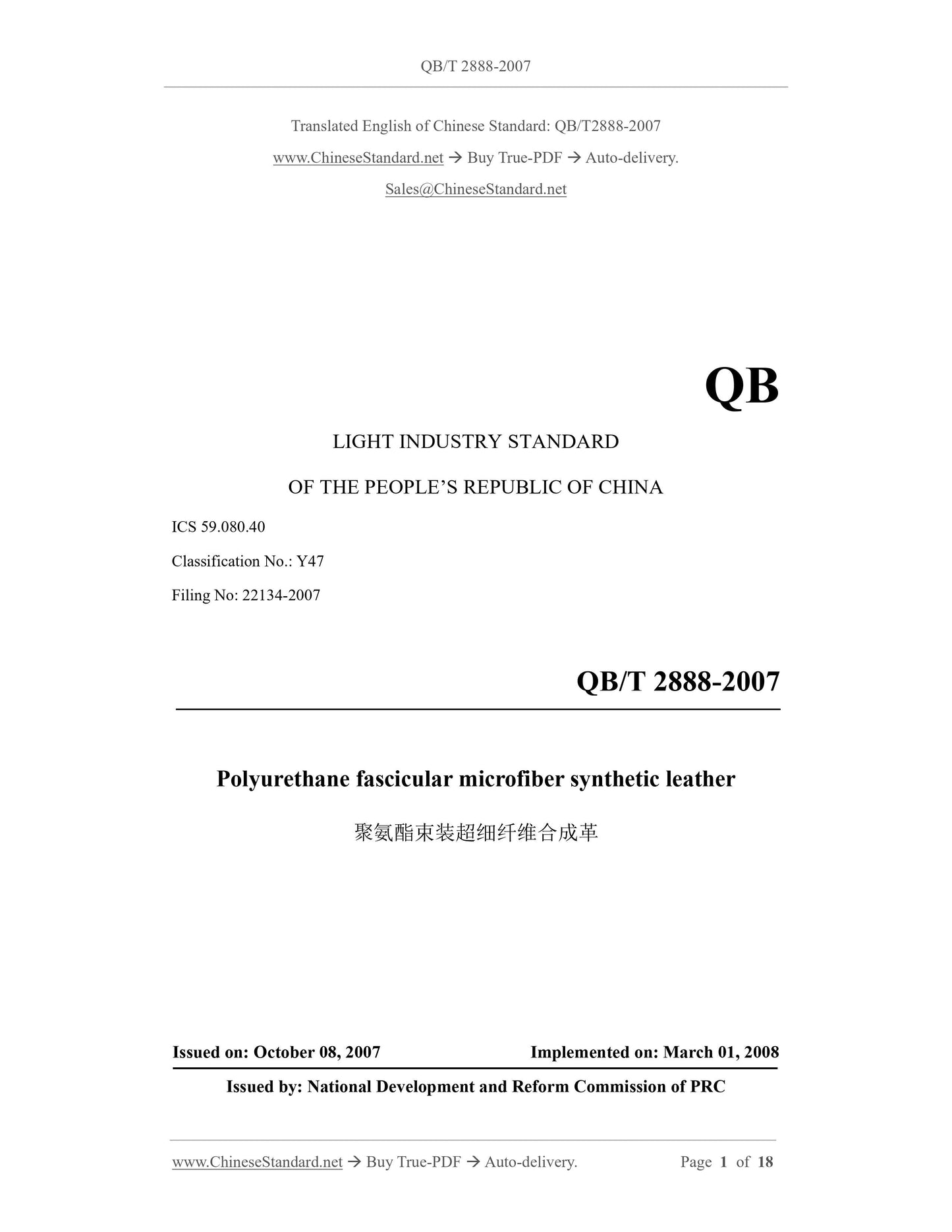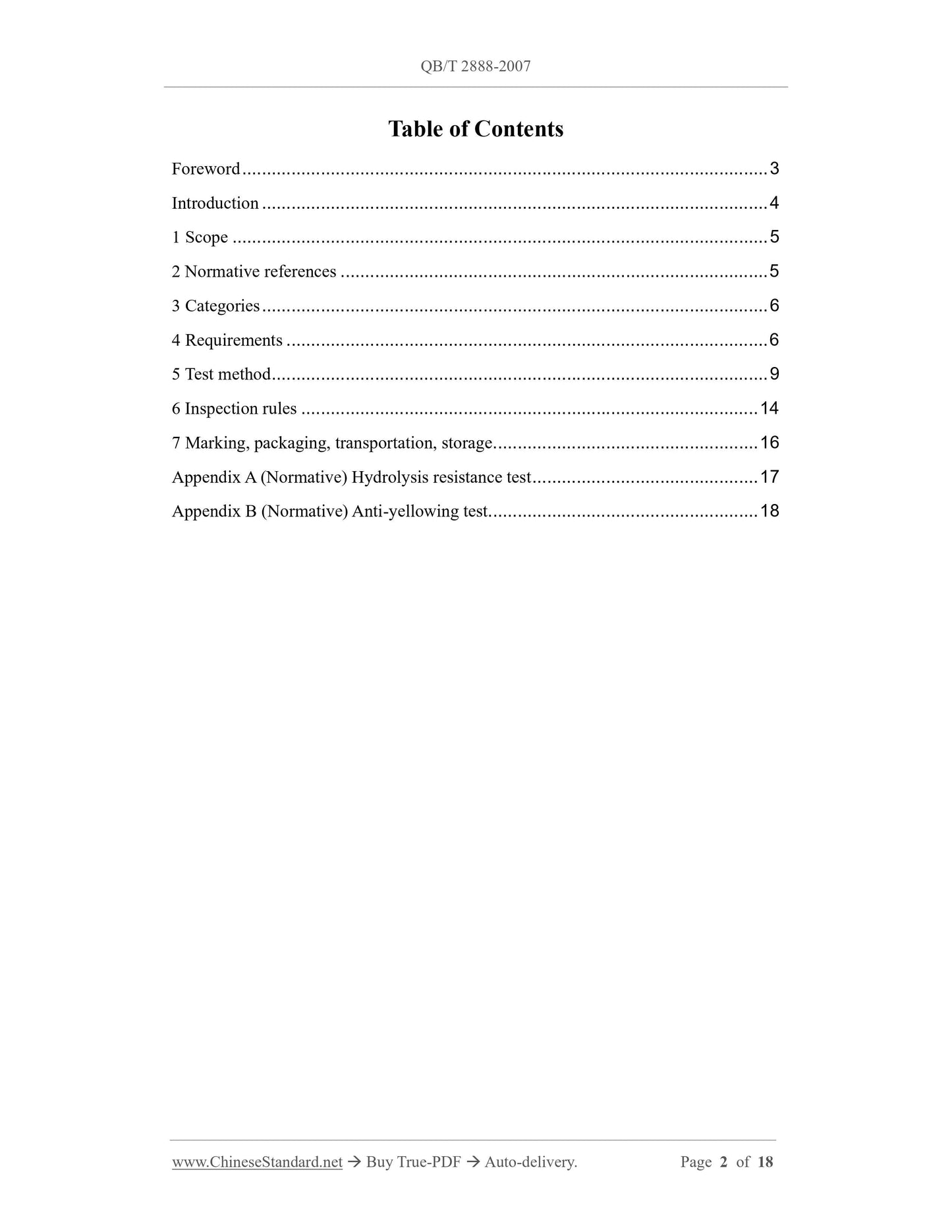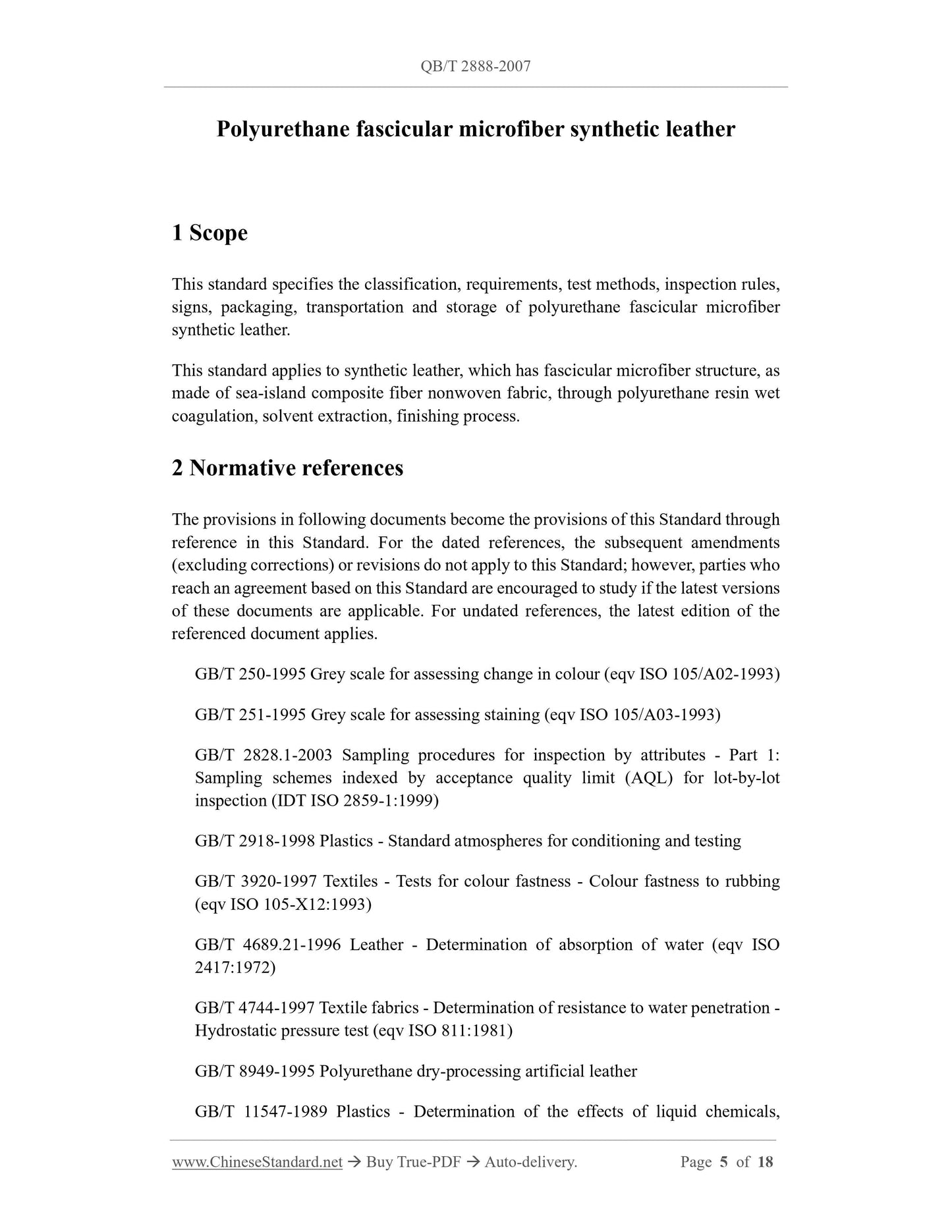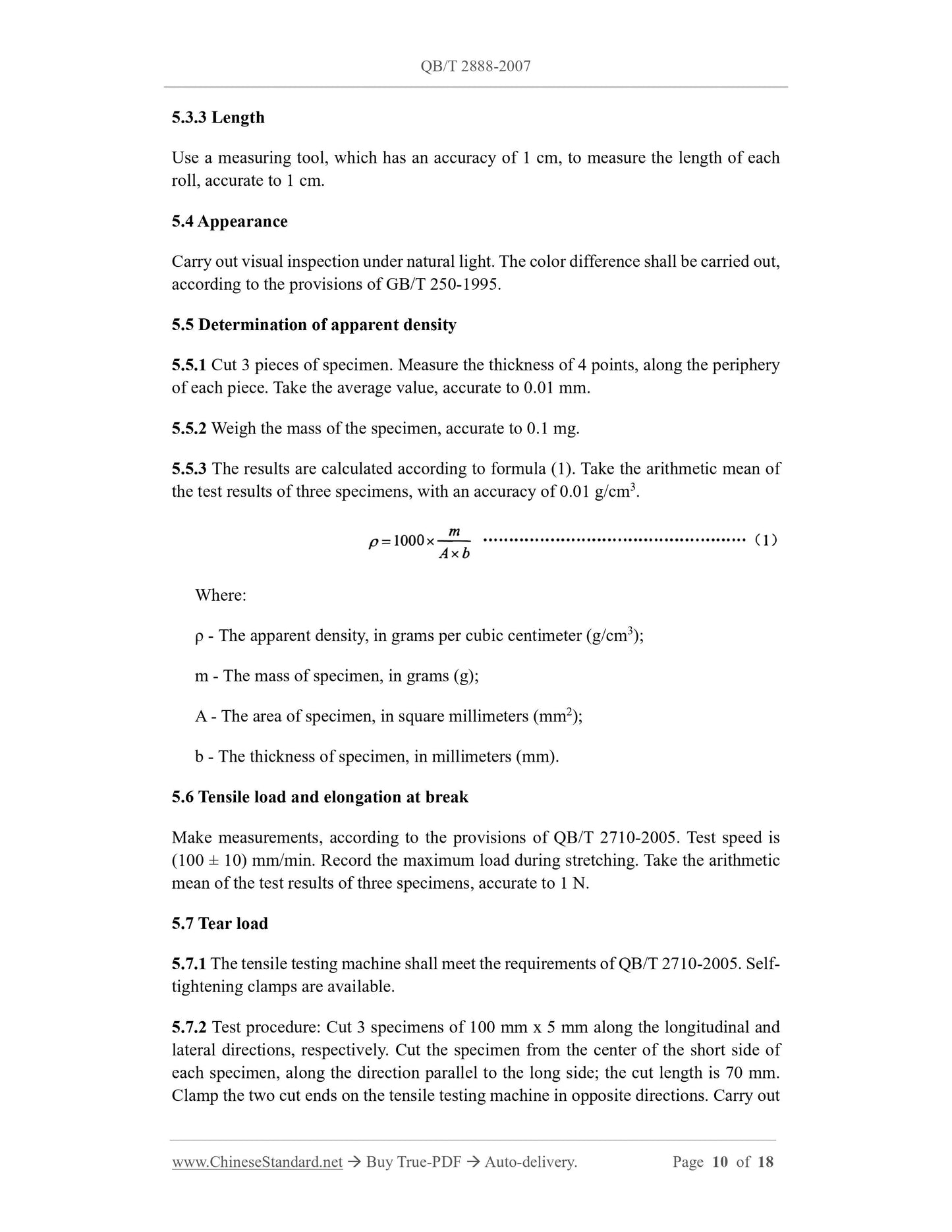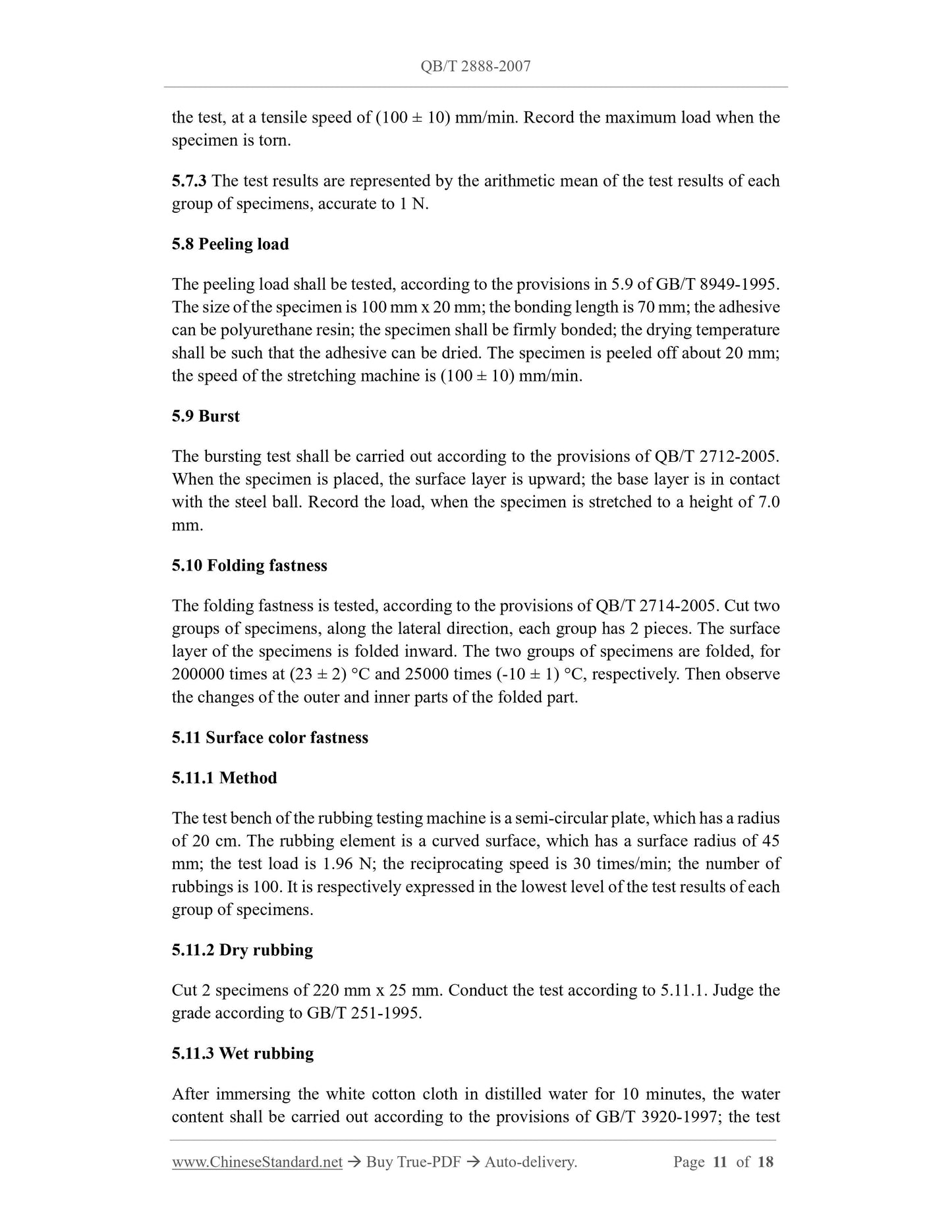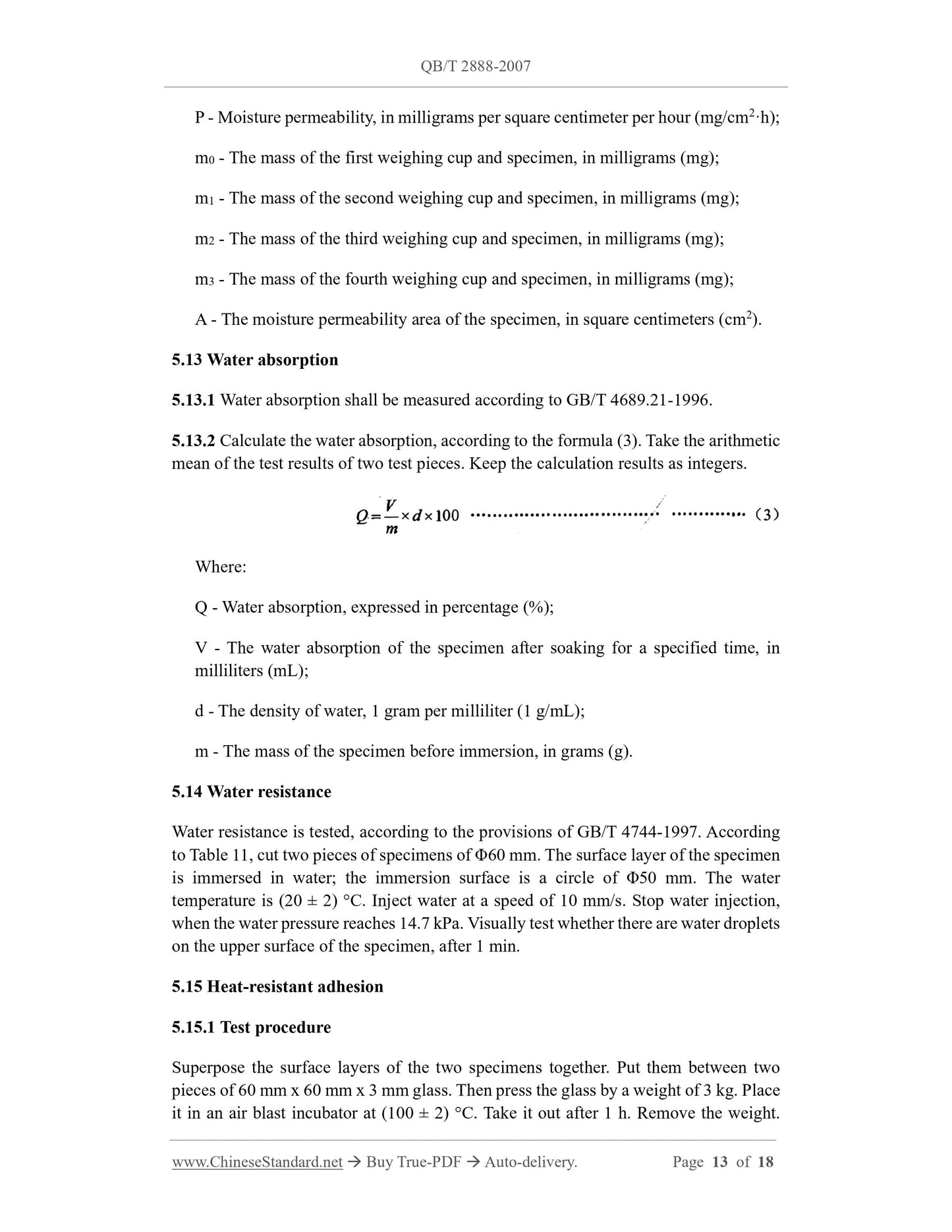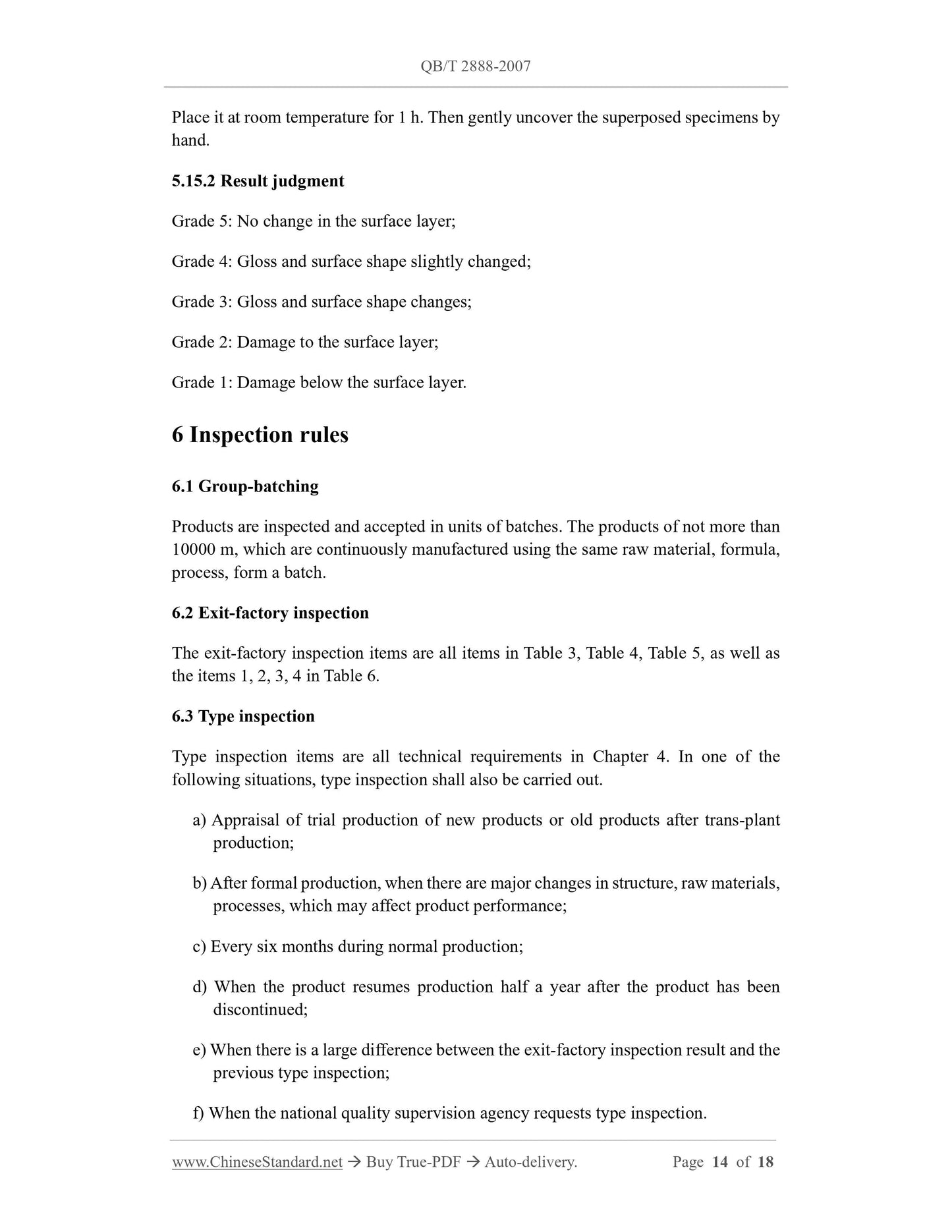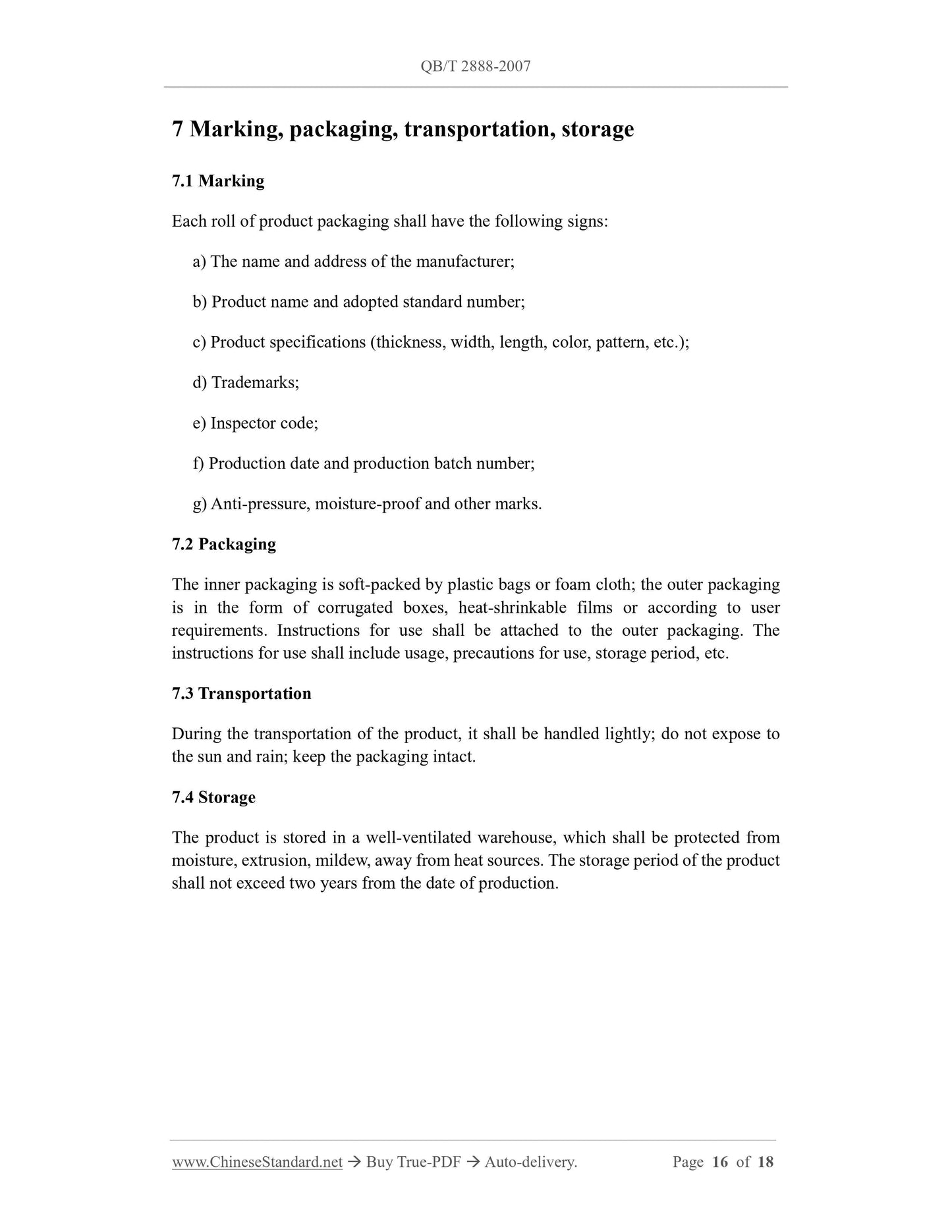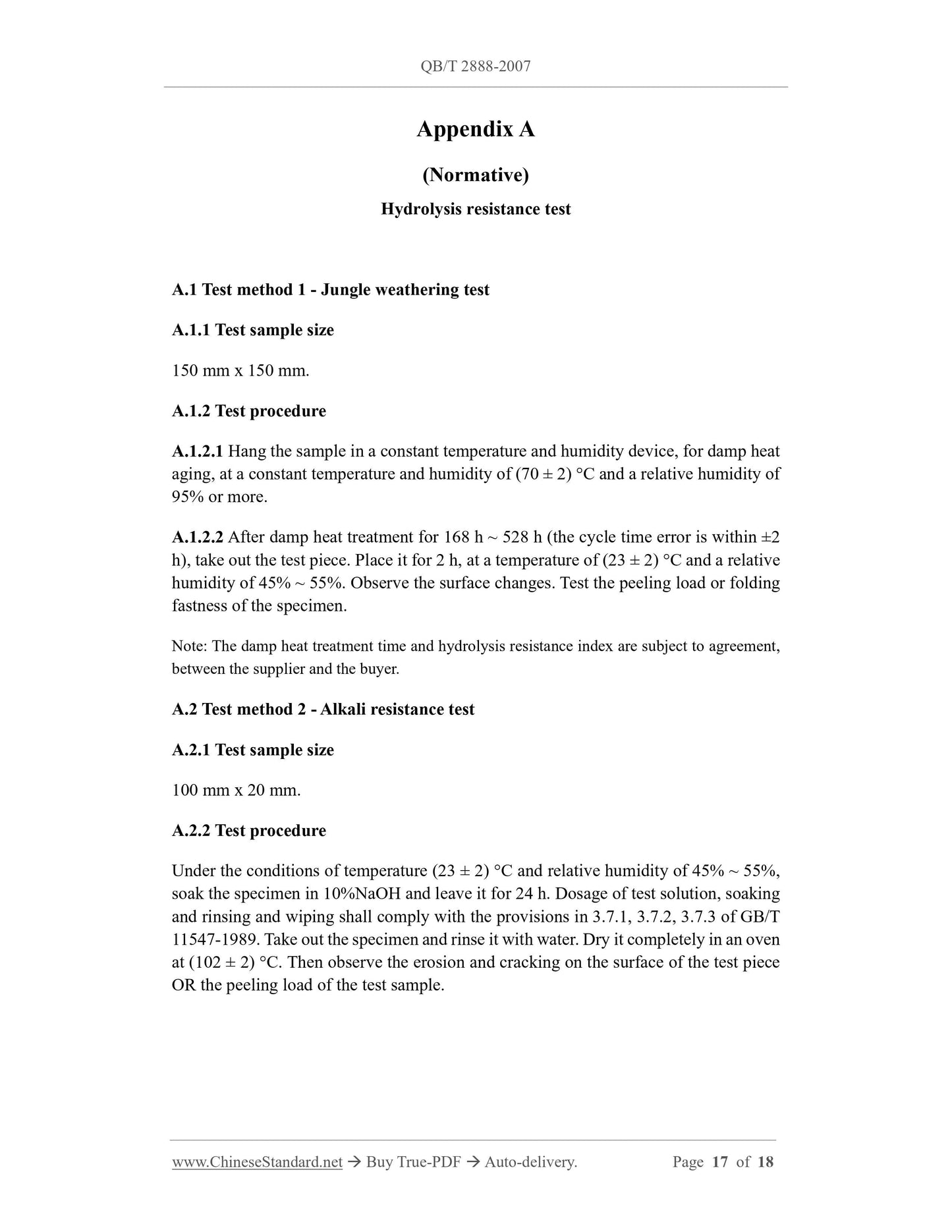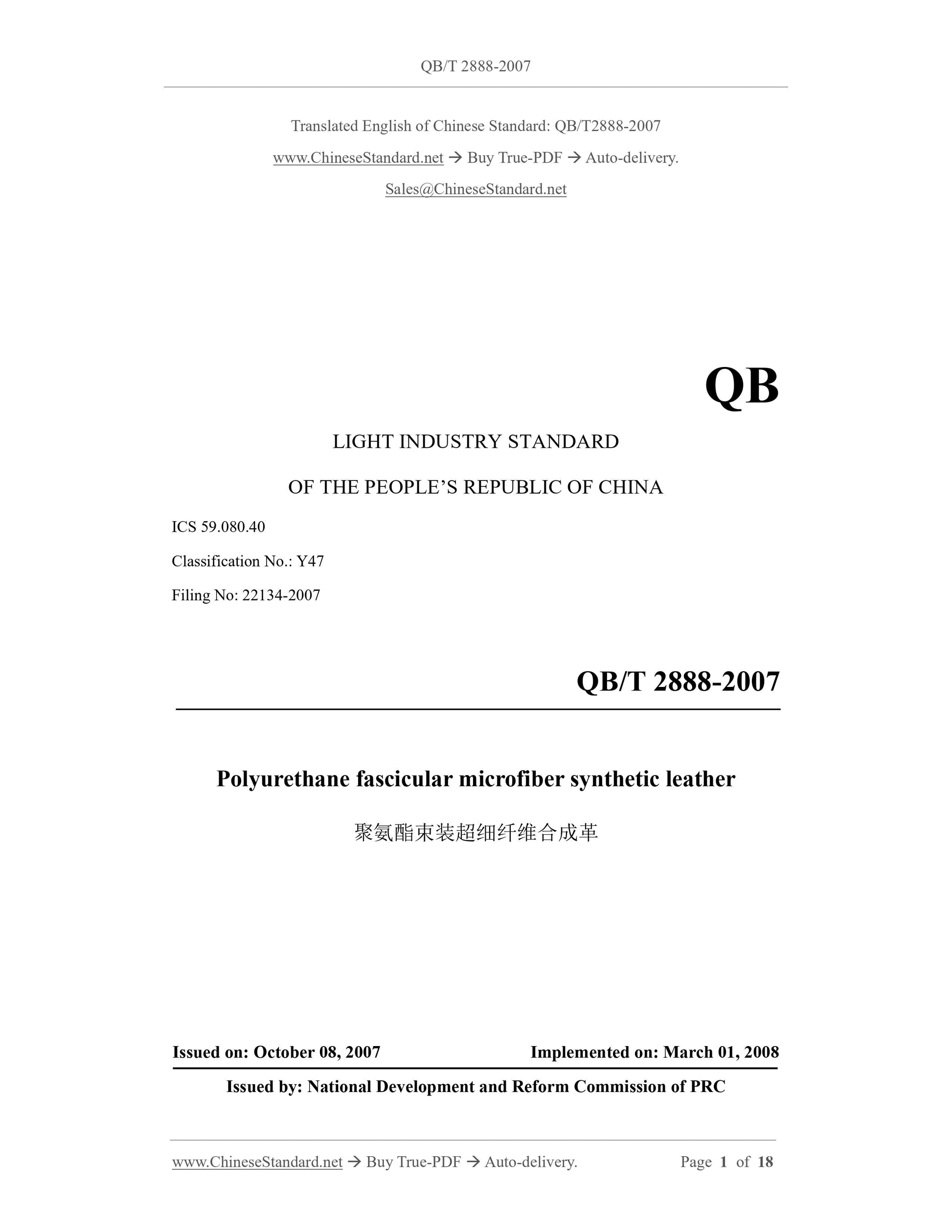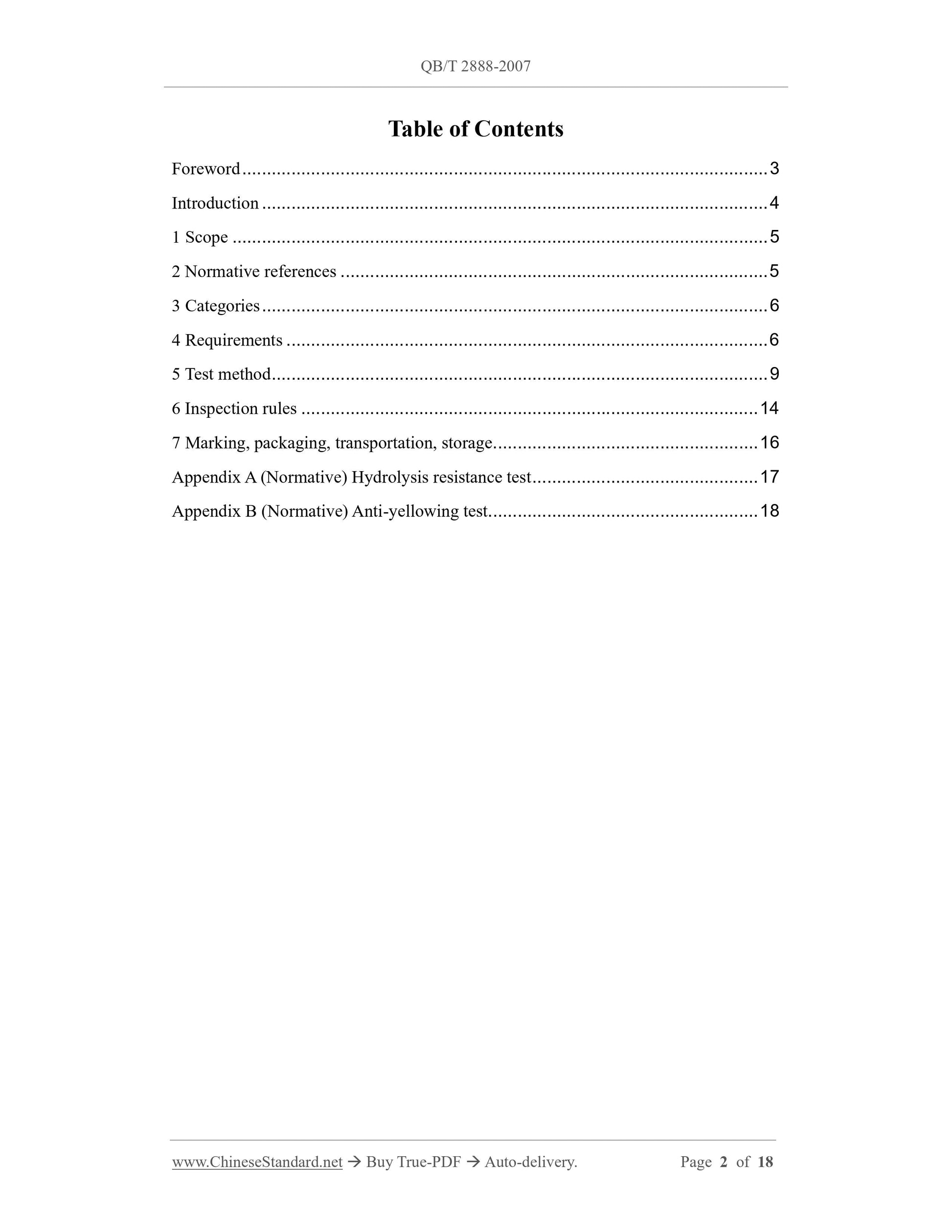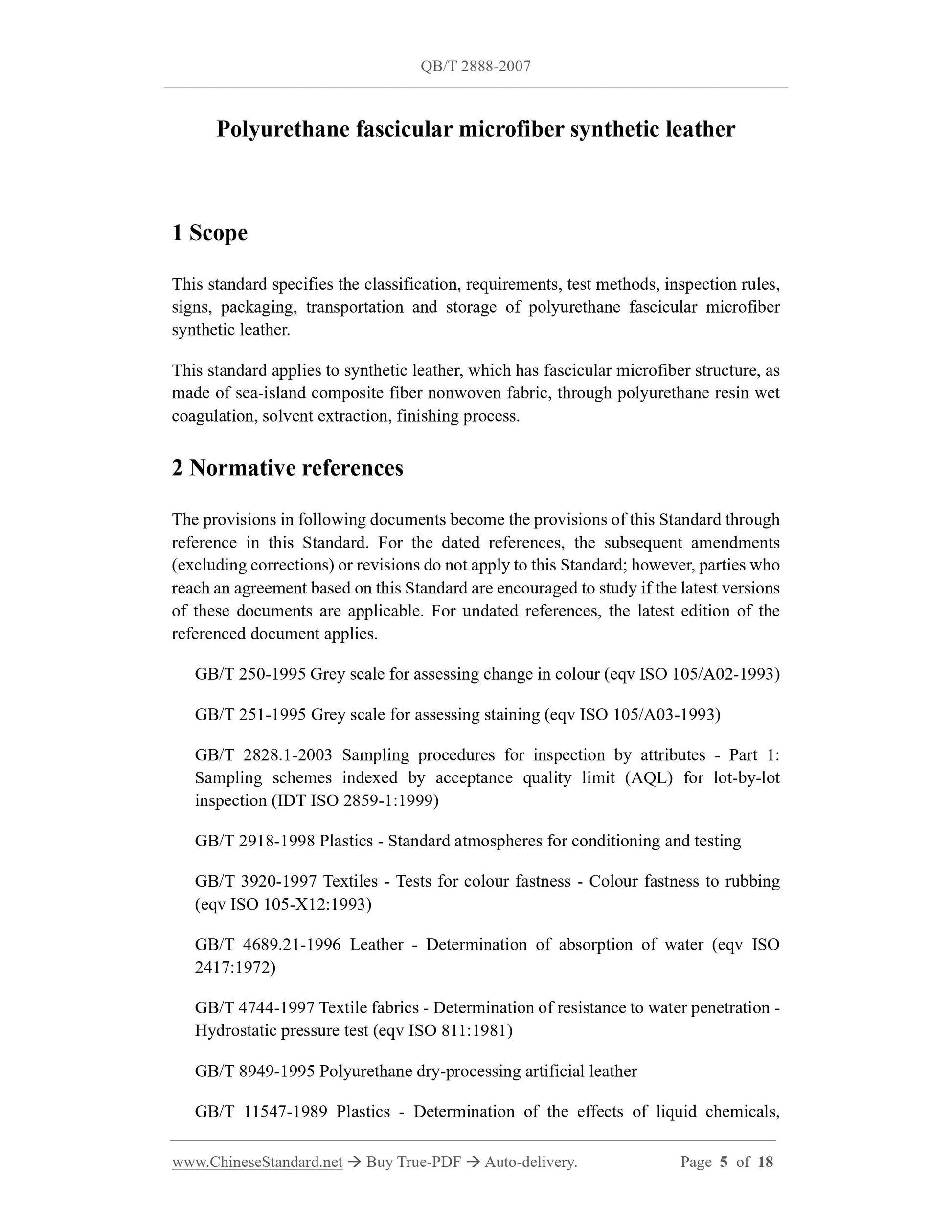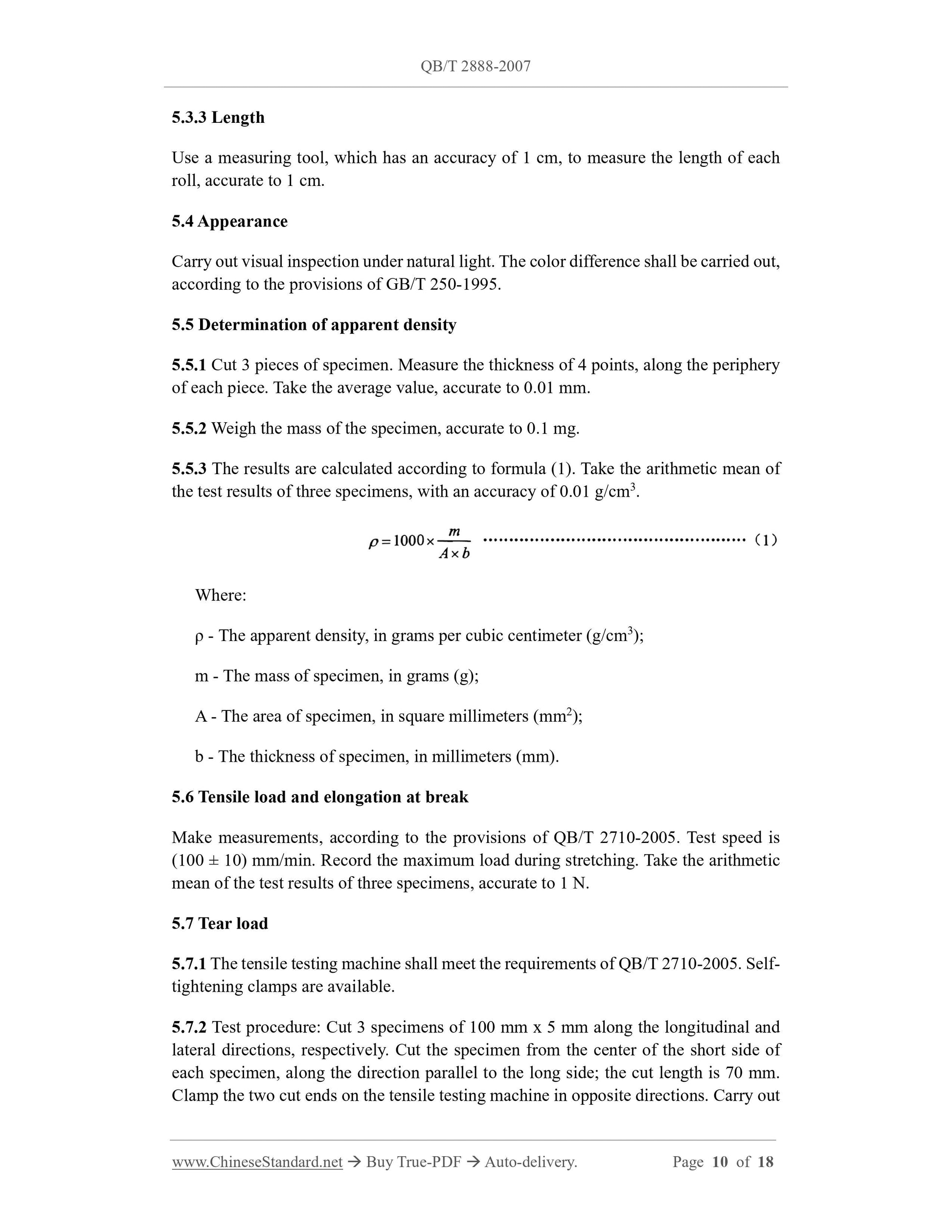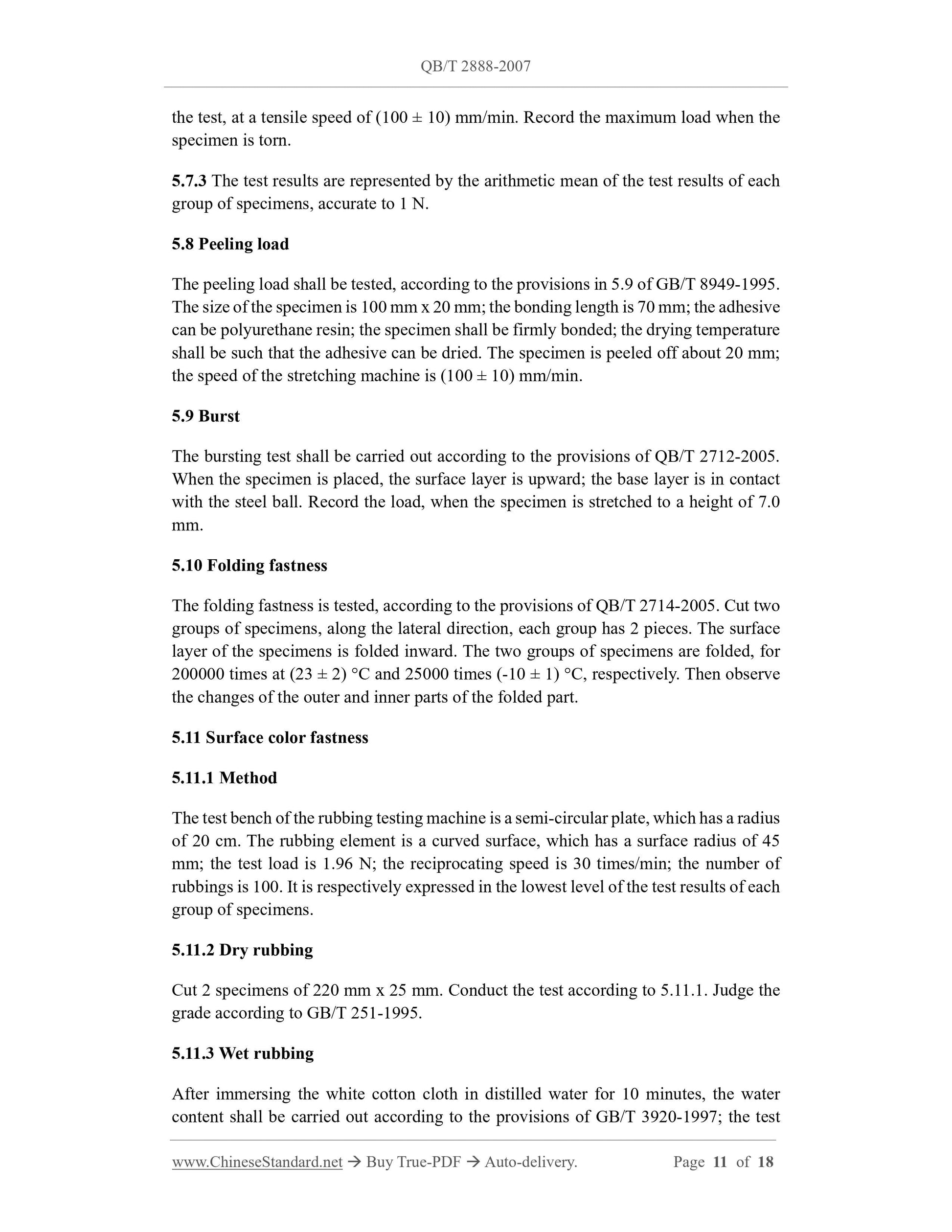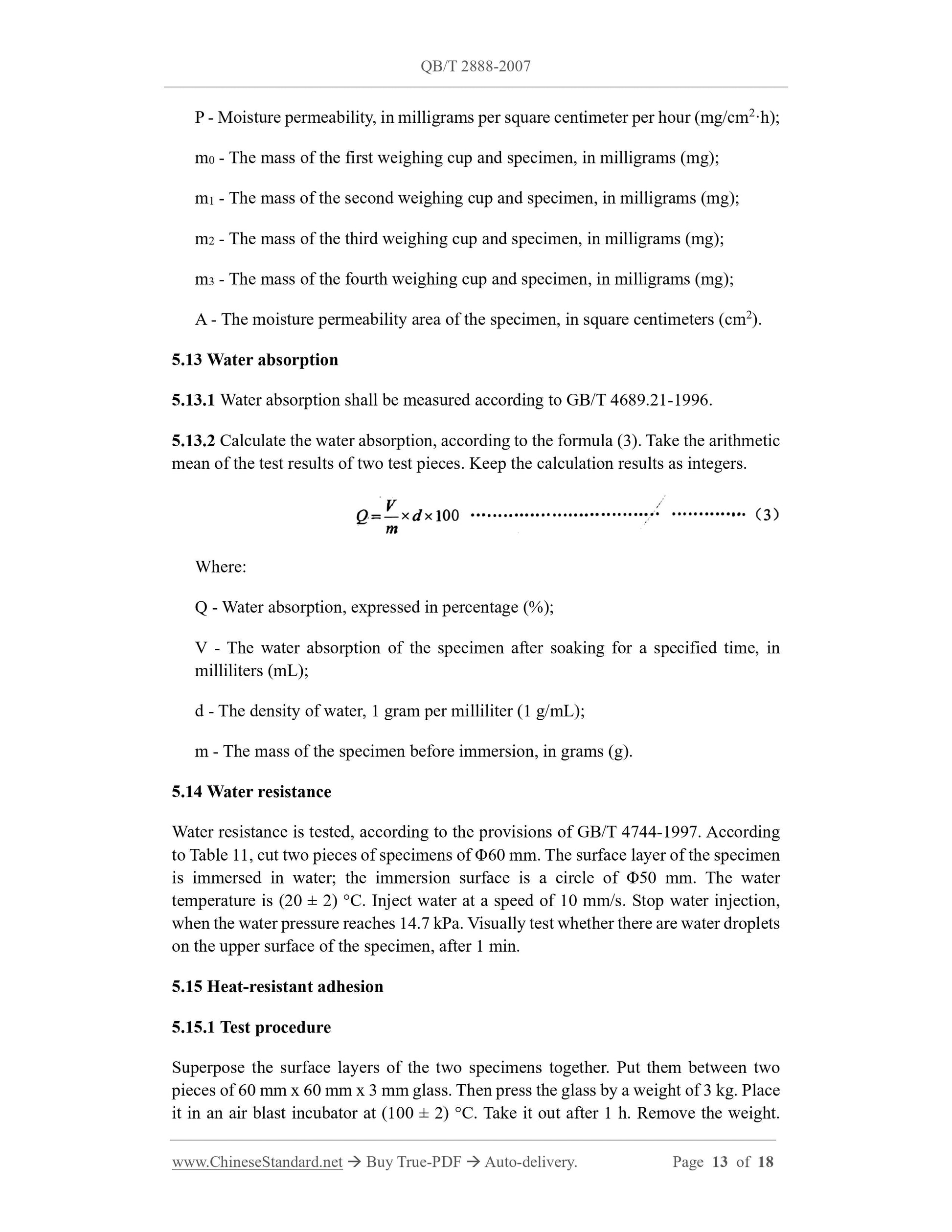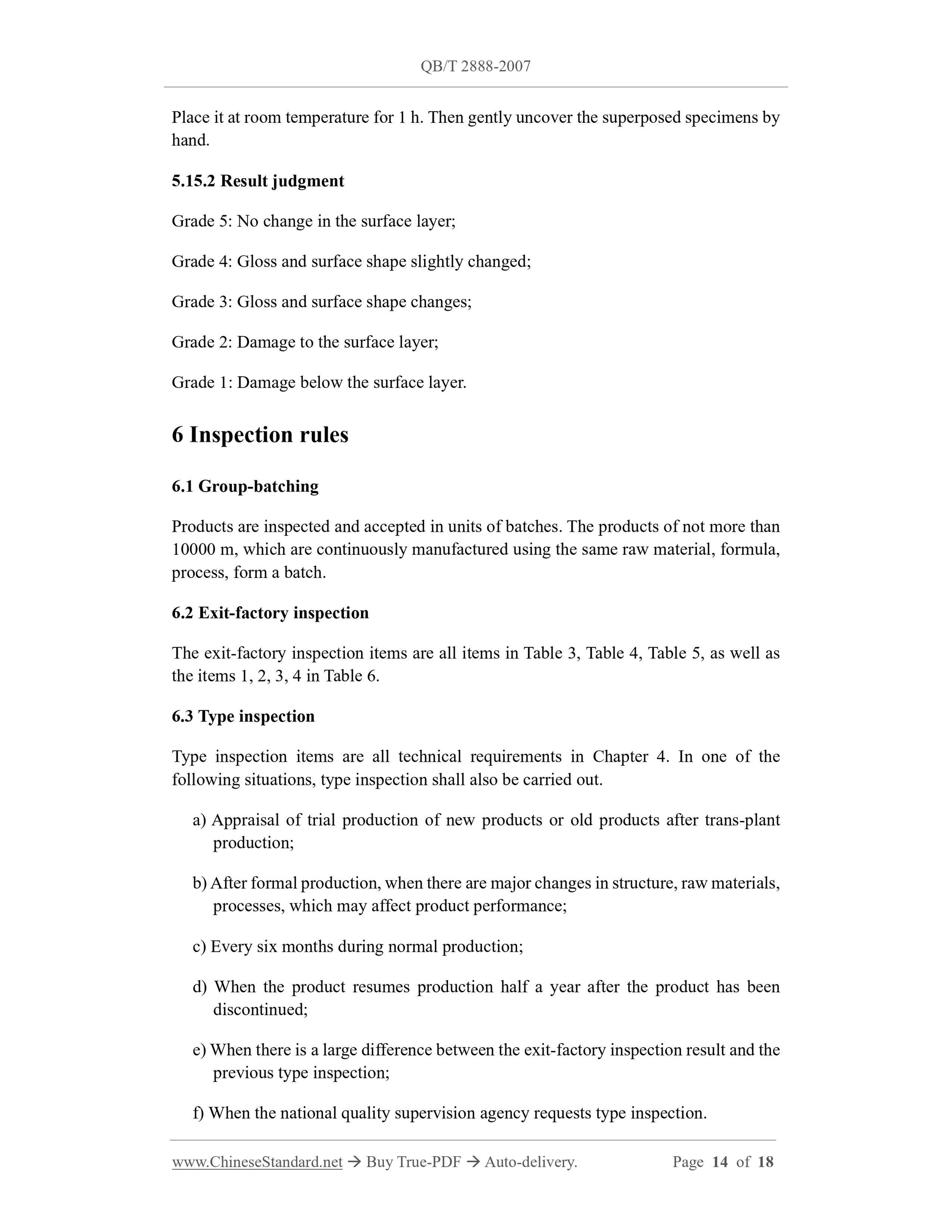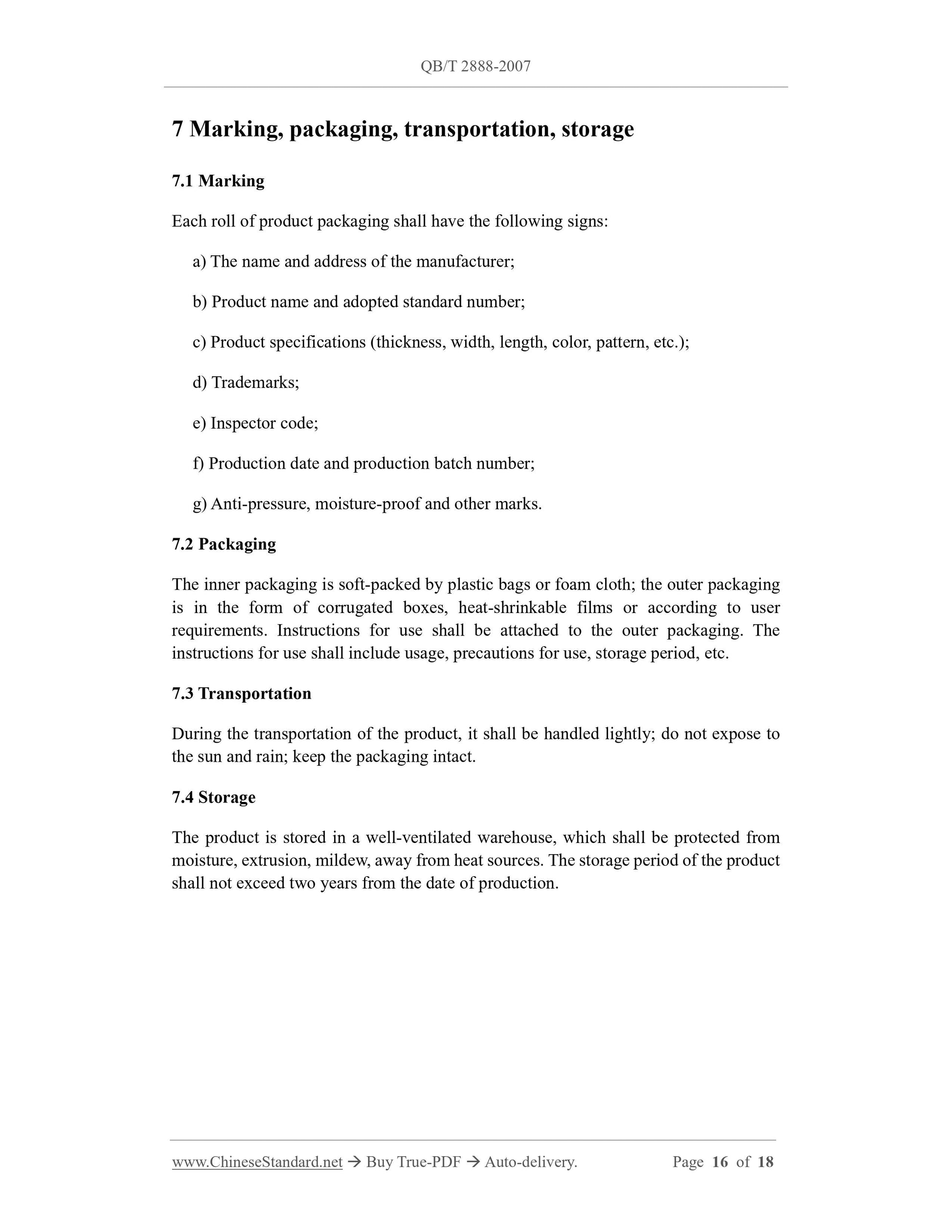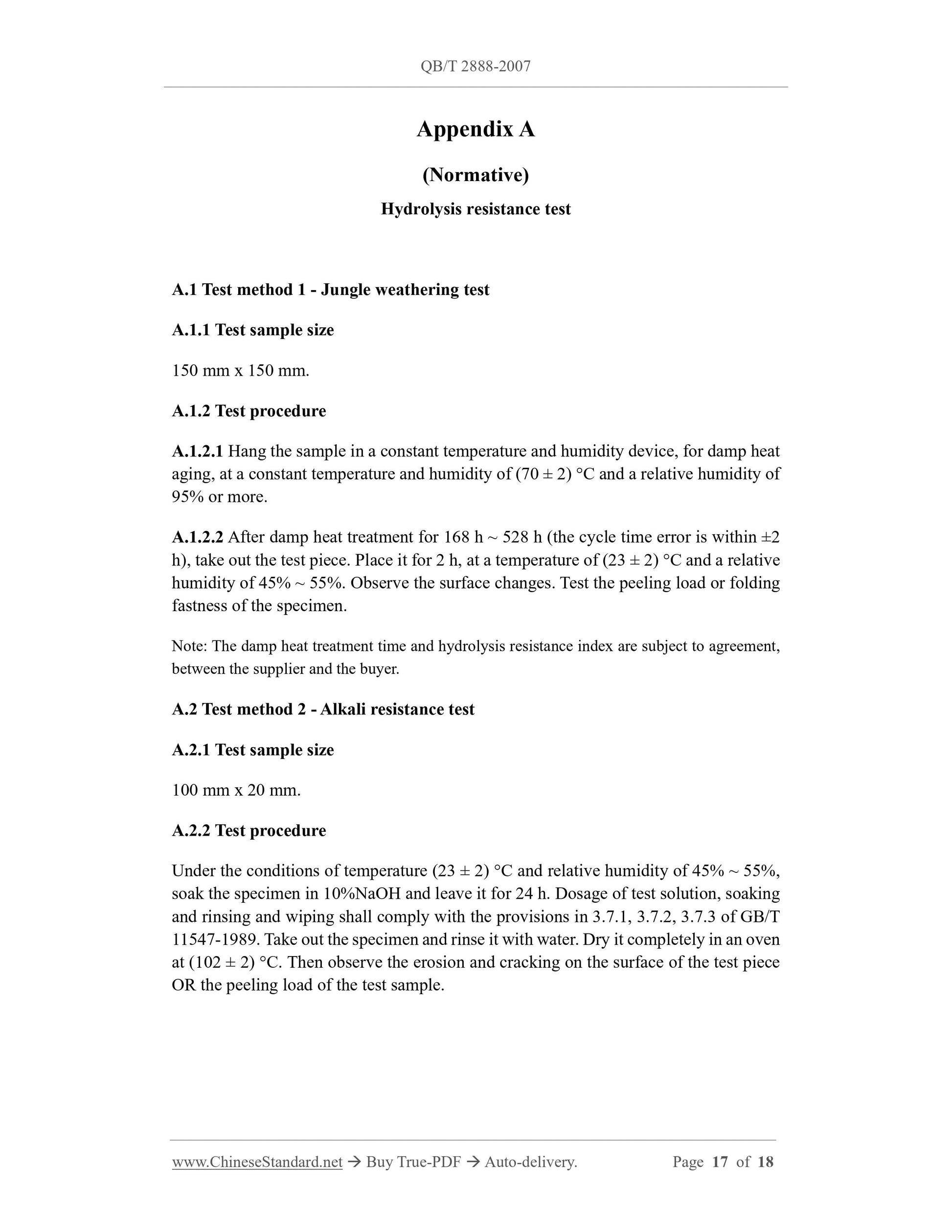1
/
of
9
www.ChineseStandard.us -- Field Test Asia Pte. Ltd.
QB/T 2888-2007 English PDF (QB/T2888-2007)
QB/T 2888-2007 English PDF (QB/T2888-2007)
Regular price
$200.00
Regular price
Sale price
$200.00
Unit price
/
per
Shipping calculated at checkout.
Couldn't load pickup availability
QB/T 2888-2007: Polyurethane fascicular microfibre synthetic leather
Delivery: 9 seconds. Download (and Email) true-PDF + Invoice.Get Quotation: Click QB/T 2888-2007 (Self-service in 1-minute)
Newer / historical versions: QB/T 2888-2007
Preview True-PDF
Scope
This standard specifies the classification, requirements, test methods, inspection rules,signs, packaging, transportation and storage of polyurethane fascicular microfiber
synthetic leather.
This standard applies to synthetic leather, which has fascicular microfiber structure, as
made of sea-island composite fiber nonwoven fabric, through polyurethane resin wet
coagulation, solvent extraction, finishing process.
Basic Data
| Standard ID | QB/T 2888-2007 (QB/T2888-2007) |
| Description (Translated English) | Polyurethane fascicular microfibre synthetic leather |
| Sector / Industry | Light Industry Standard (Recommended) |
| Classification of Chinese Standard | Y47 |
| Classification of International Standard | 59.080.40 |
| Word Count Estimation | 14,116 |
| Date of Issue | 2007-10-08 |
| Date of Implementation | 2008-03-01 |
| Quoted Standard | GB/T 250-1995; GB/T 251-1995; GB/T 2828.1-2003; GB/T 2918-1998; GB/T 3920-1997; GB/T 4689.21-1996; GB/T 4744-1997; GB/T 8949-1995; QB/T 2709-2005; QB/T 2710-2005; QB/T 2712-2005; QB/T 2714-2005 |
| Adopted Standard | JIS K6601-1995, NEQ |
| Issuing agency(ies) | Ministry of Industry and Information Technology |
| Summary | This standard specifies the polyurethane microfiber synthetic leather bundle classification, requirements, test methods, inspection rules and signs, packaging, transport and storage. This standard applies to island type composite fiber non -woven fabric was wet polyurethane resin solidification, solvent extraction and finishing processes made ??of synthetic leather with a microfiber bundle structure. |
Share
